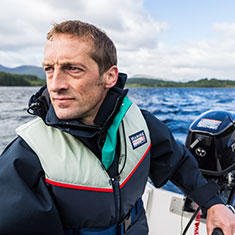Dr Geoff Hilton
Head of Conservation Evidence

About me
My conservation career began as a WWT volunteer back in 1992. After brief stints working in wetlands in New Zealand and Venezuela, I completed a PhD at Glasgow University, investigating the ecophysiology of seabird digestion, and then did a postdoc on the thermodynamics of incubation. I worked for 10 years in the International Research Team at the Royal Society for the Protection of Birds, where I managed a range of projects designed to diagnose the pressures on threatened species, and developed a major focus on islands, invasive species and island restoration; during 2005-7 I was seconded to Lisbon and the Portuguese Society for the Protection of Birds (SPEA).
I (re-)joined WWT in 2009, establishing a Species Research Unit, which has evolved into the Conservation Evidence Department (currently 19 staff and six PhD students).
My role
I oversee the work of WWT’s Conservation Evidence department and am part of the Senior Management Team of the organisation. The team provides conservation evidence to support the wetland conservation work of WWT, and my role is to set the strategic direction for research at WWT and support the team in delivering it. My own background is in ornithology and the science of species recovery, but we are a diverse team, with expertise in disciplines from social science to ecology, and taxa from birds to insects.
At present I am particularly passionate about saving Eurasian curlews: a species of great conservation importance but also personal meaning.
Experience and interests
- Ornithological science, especially wildfowl, waders and seabirds
- Species recovery science
- Population modelling
- Invasive species biology and island restoration
- Stable isotope ecology
Publications
Lewis-Phillips, J., Brooks, S. ., Sayer, C. D., Patmore, I. R., Hilton, G. M., Harrison, A. L., Robson, H.J. &Axmacher, J. (2019). Ponds as insect chimneys: restoring overgrown farmland ponds benefits birds through elevated productivity of emerging aquatic insects. Biological Conservation.
Soriano-Redondo, A., Jones-Todd, C. M., Bearhop, S. J., Hliton, G. M., Lock, L., Stanbury, A., Votier, S.C. & Illian, J. (2019). Understanding species distribution in dynamic populations: a new approach using spatio-temporal point process models. Ecography. doi: 10.1111/ecog.03771
Bamford, A. J., Razafindrajao, F., Young, R. P., & Hilton, G. M. (2017). Profound and pervasive degradation of Madagascar’s freshwater wetlands and links with biodiversity. PLoS ONE, 12(8), 1–15. doi: 10.1371/journal.pone.0182673
Soriano-Redondo, A., Bearhop, S., Cleasby, I. R. I. R., Lock, L., Votier, S. C. C., & Hilton, G. M. (2016). Ecological responses to extreme flooding events: a case study with a reintroduced bird. Scientific Reports, 6, 28595. doi: 10.1038/srep28595
Weegman, M. D., Bearhop, S., Fox, A. D., Hilton, G. M., Walsh, A. J., McDonald, J. L., & Hodgson, D. J. (2016). Integrated population modelling reveals a perceived source to be a cryptic sink. Journal of Animal Ecology, 85(2), 467–475. doi: 10.1111/1365-2656.12481
Return to meet the team